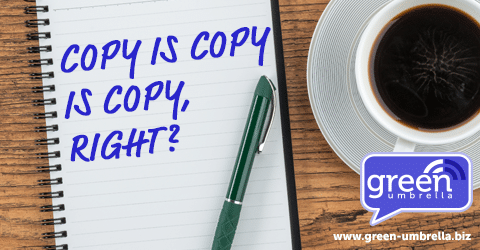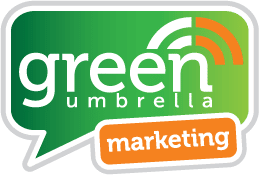Copy is copy is copy, right?

Copy is copy is copy, right?

Not really. When it comes to online copywriting, you may have similar communication objectives to your print content, but there are some important differences to consider – and some things that hold true across both channels.
Firstly, what are the similarities?
Well, any copy, wherever used, is a piece of communication and needs to achieve its objective, such as conveying an idea or a piece of information. And both online and print copy for the same organisation should be similar in tone, to give a consistency in style to communications and so reinforce the brand. Both need to be effective, to appeal to the reader, solve their problems, and encourage them to take the next step. And of course, spelling and basic grammar need to be accurate for both (although as I have written in my other blogs, you can throw out a lot of the grammar rules you were taught for O level English, such as never starting a sentence with And!).
So where does online copy differ?
With the average office worker getting 121 emails pinging into their inbox, and spending 8 seconds reading – if they are interested – email copy should grab attention quickly. Research shows readers speed read emails, particularly the first paragraph, so it makes sense to me to place, or certainly reinforce, the most important point in paragraph two.
Write concisely, with an easily understandable message and a clear call to action. Look at the difference here: “Owing to the fact that people scan emails it is important that you write concisely” Cut the excess words – “Because people scan emails, you must write concisely.” Emails also need a strong subject line – it is often this that determines whether your carefully crafted copy even gets opened.
Web content must be scannable so that your reader can easily pick out the main points. Readable copy should be in short paragraphs, each standing up on its own merits, which look accessible and easy to read.
Give each page a strong headline that makes your key point. If that’s all your visitor reads, they should get a sense of what the page is about.
Of course, on a website you can link to more information – that’s where more detailed, background information should be.
Accuracy and currency are important. People understand a printed brochure may become dated, but there’s no excuse online. Check your website regularly to ensure it is bang up to date.
But the real beauty of online is it is so easy to test. Test different subject lines on emails, different headings on web pages, different images. Test where you place your main message. Try different calls to action. With all the analytical tools readily available, you can prune, refine and tweak as much as you like and at little cost. Just remember to only change one thing at a time – otherwise, you won’t know what has caused the improvement or decline! That’s the way to make your online communications the very best they can be.
Experienced business to business marketing consultant helping organisations plan and implement marketing plans
Share this!

